As a mom of three and a former Kindergarten ECE, I’ve learned that going on a “treasure hunt” and finding your materials for nature activities is half the fun. These spring crafts for kids will keep them busy and teach them to appreciate nature—plus, they don’t cost a lot of money. In fact, you probably already have everything you need in your home, in your backyard, or laying around in your local park, if you can safely take a socially-distanced hike or neighbourhood stroll where you live. (Keep two metres apart from passersby who aren’t part of your family.) Enjoying some fresh air and soaking up the sunshine is an instant mood-booster for kids and cooped-up grown-ups, too.
1. Nature paint brush
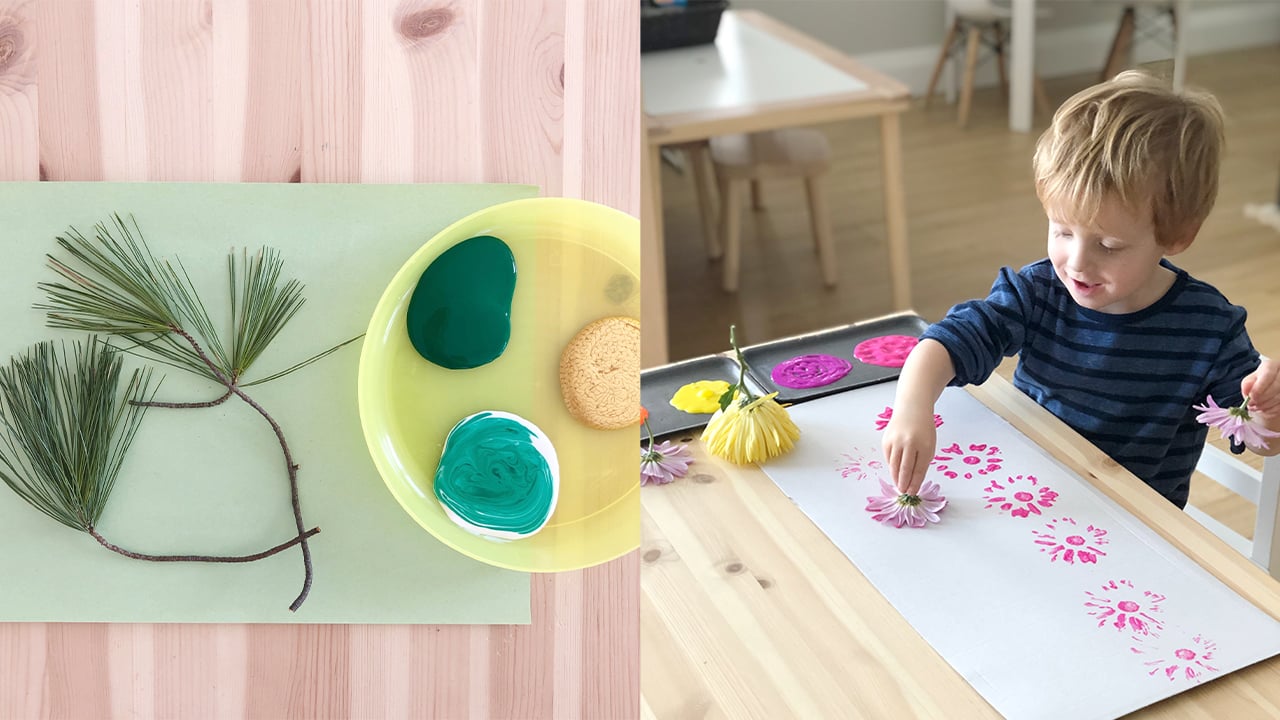
Photo: Courtesy of Katie Engel
This is just what it sounds like. Go outside and help your child find various items that will be used as a paint brush. Think flowers, pine needles, pine cones, tall grasses, etc. You may choose to use them as is, like a stamp, or try attaching them to a stick (use a rubber band or some string) to make the “handle” of a paint brush.
2. Yarn wrapping
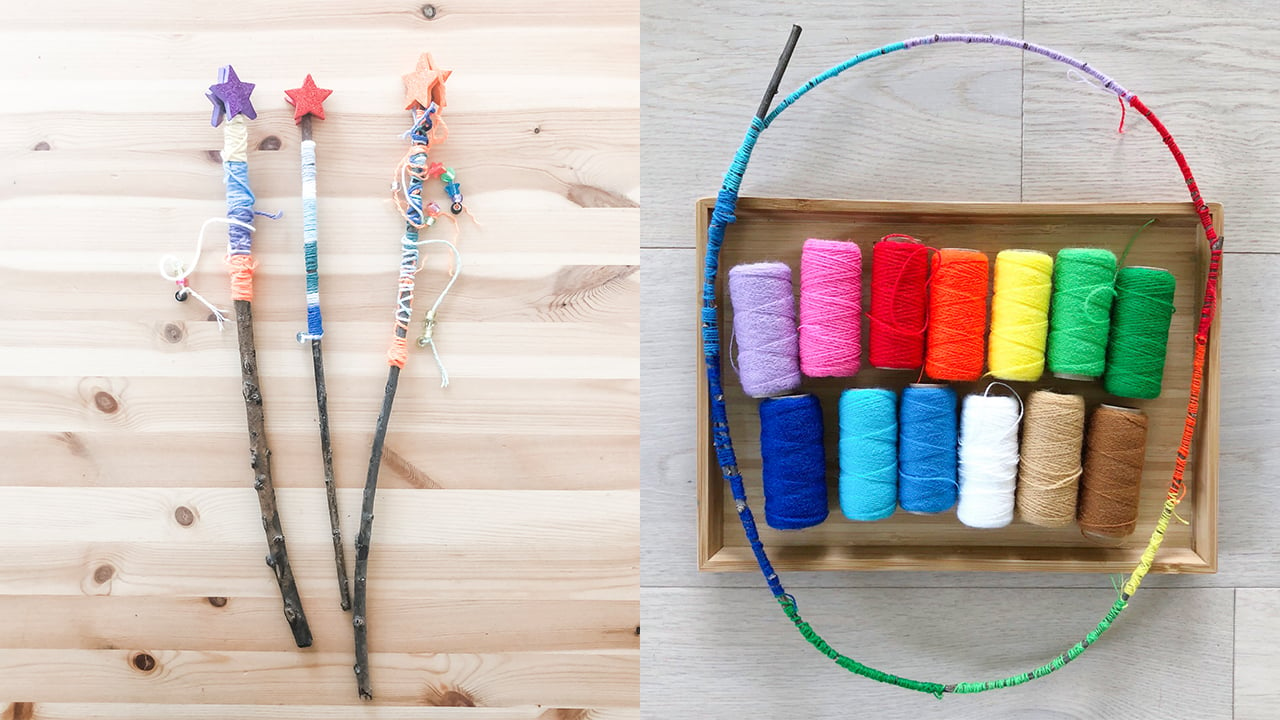
Photo: Courtesy of Katie Engel
When my kids and I made these, we called them “magic wands.” Challenge your child to find their favourite stick, then provide them with some string, yarn, or even pipe cleaners (whichever you have on hand) to wrap around their stick. You could also tie some longer pieces of string to the end and add some beads for a fun effect.
3. Build a habitat
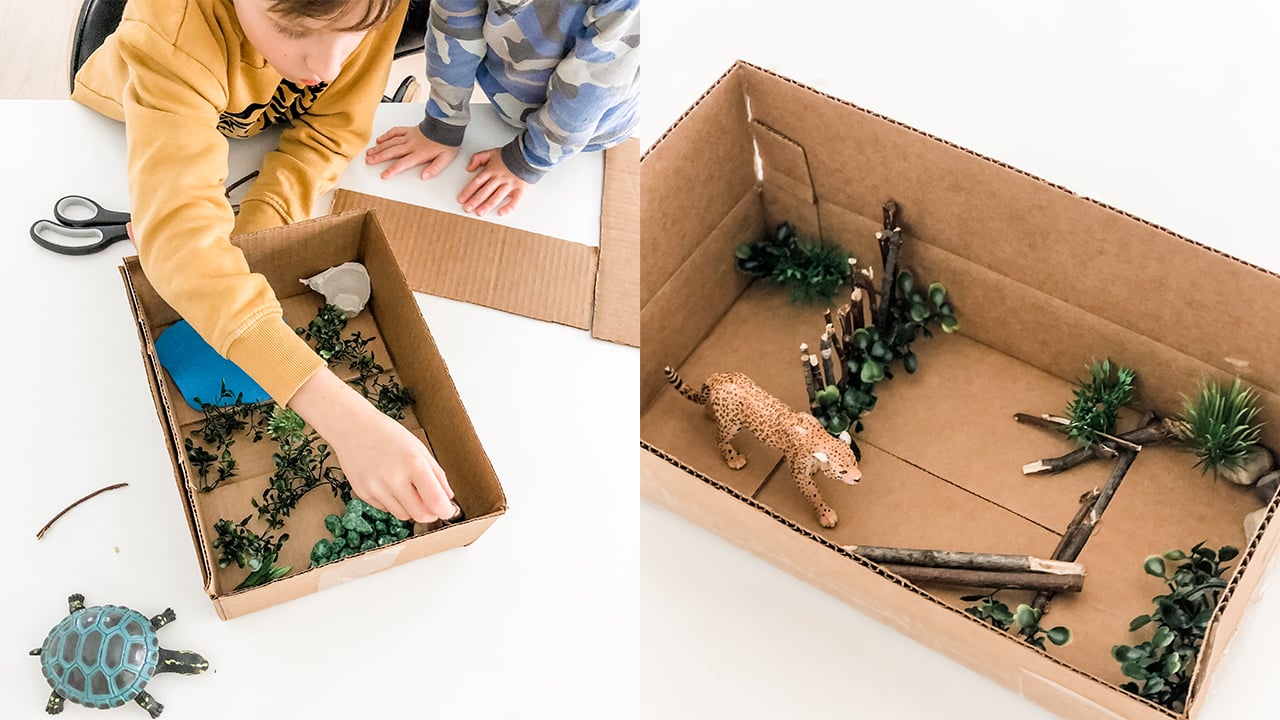
Photo: Courtesy of Katie Engel
Do you have some little animal figurines, like turtles or dinosaurs? (Batman or Elsa may even enjoy this as well!) Grab some sticks, stones and foliage and build them a habitat or hideout inside a cardboard box. Let your child design the space, placing the sticks and rocks where they would like them. Then use a glue gun (grown-ups only) to secure it all into place.
4. Cutting practice
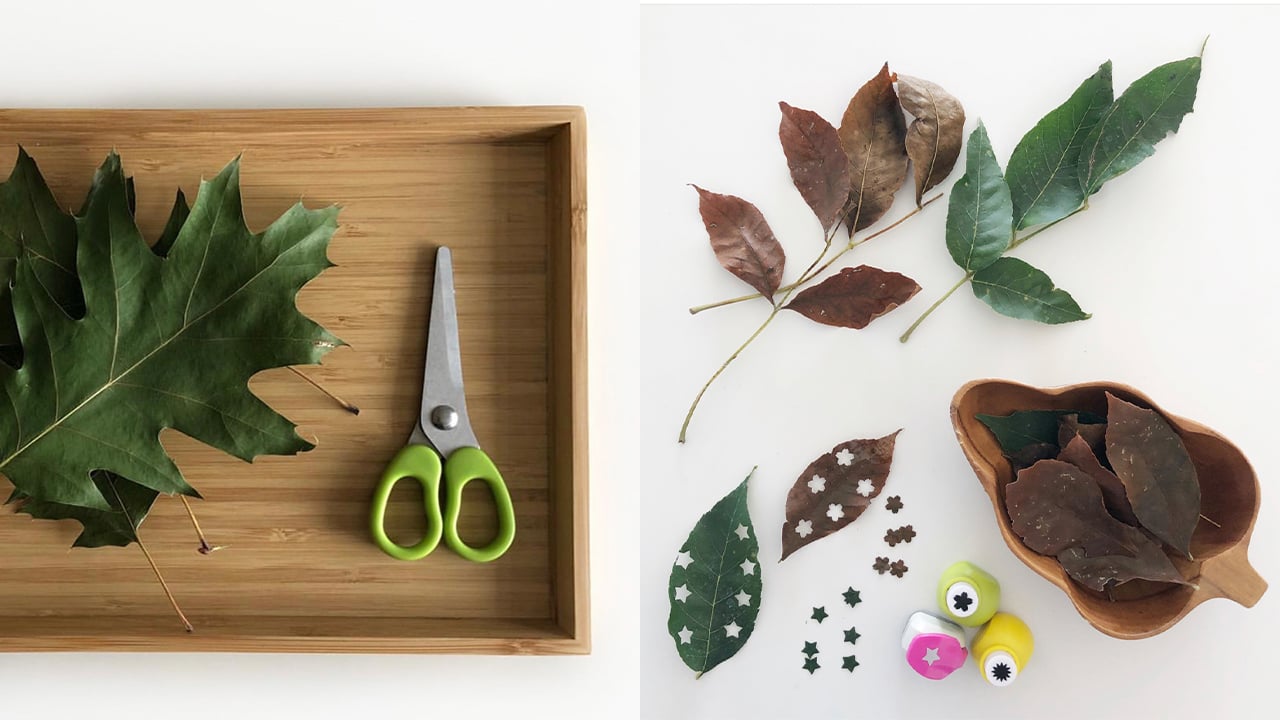
Photo: Courtesy of Katie Engel
There’s no doubt that children are drawn to scissors, and I don’t mind one bit, because it’s a great way for them to practice hand-eye coordination and motor control. It’s a tricky—but important—skill to learn. Instead of using paper, switch things up and let them cut up leaves, twigs or trimmings from the last time you cut the grass or pruned the hedges. Put the materials in a small bin or on a tray, provide your child with some child-safe scissors and let the cutting begin! If they’re having trouble, tell them to remember this: “thumb to the sky!” If you’re not able to supervise your child with scissors, you can modify this and use a hole-puncher instead. (And now you have some “nature confetti!”)
5. Rock painting
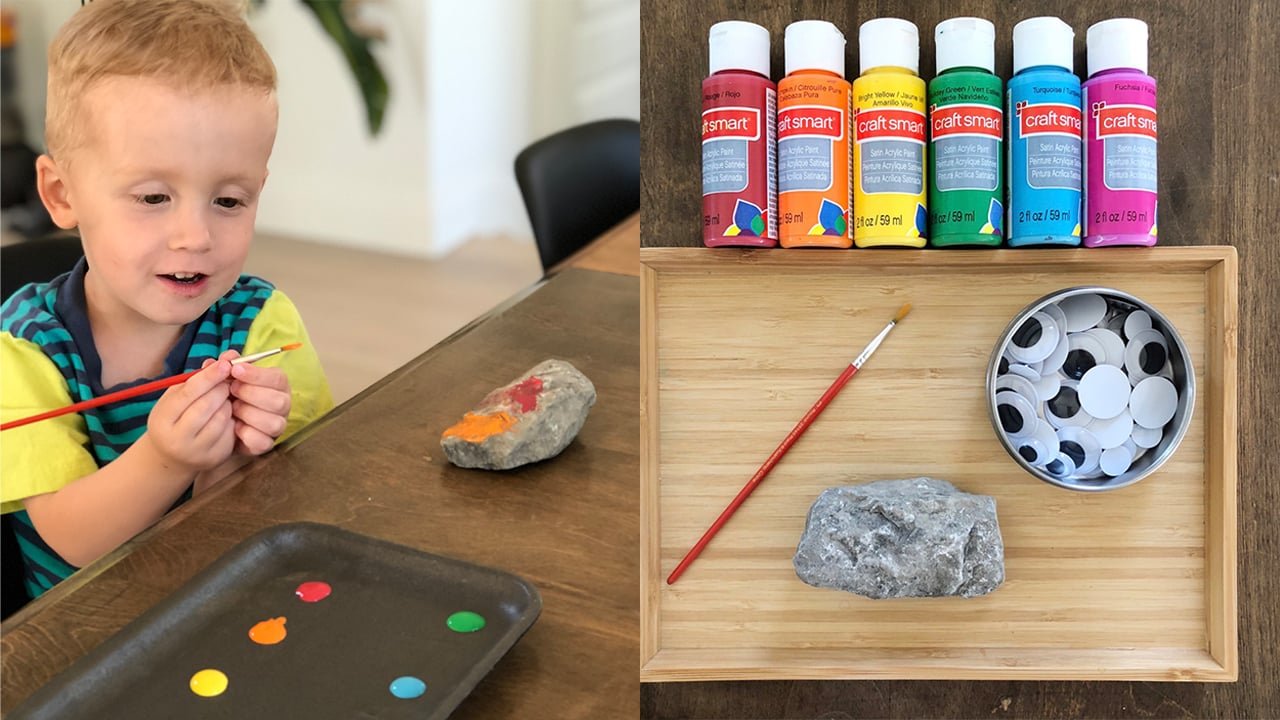
Photo: Courtesy of Katie Engel
This one seems so simple and easy, but it was a huge hit with my kids. They found some medium-sized rocks outside and then I let them use the “special” paint to decorate their rocks (we used acrylic paint, so it wouldn’t wash off). I even provided some glue and googly eyes to inspire some funny little creatures. You can proudly display the rocks in your garden for years to come!
6. Flower petal soup
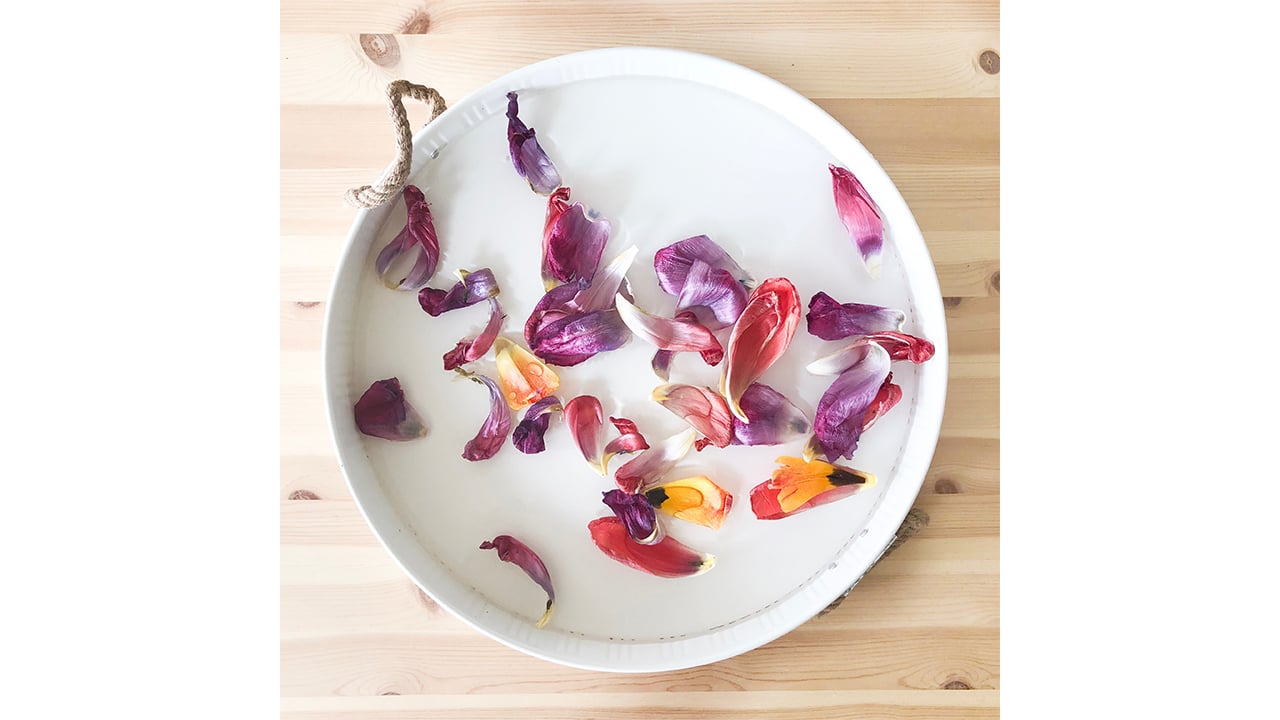
Photo: Courtesy of Katie Engel
Look outside for various coloured flower petals and nature items and add them to a bin or bowl of water. If the weather is warm enough, this is a great one to do outside. Pretend you’re making a magic potion and need special ingredients; let your child’s imagination run wild here! Grab some ladles and spoons from the kitchen, or use sticks from the backyard for stirring. Their flower petal soup may start out as a beautiful rainbow, but then it might morph into a murky, messy “mud soup,” and that’s OK!
7. Rainbow hunt
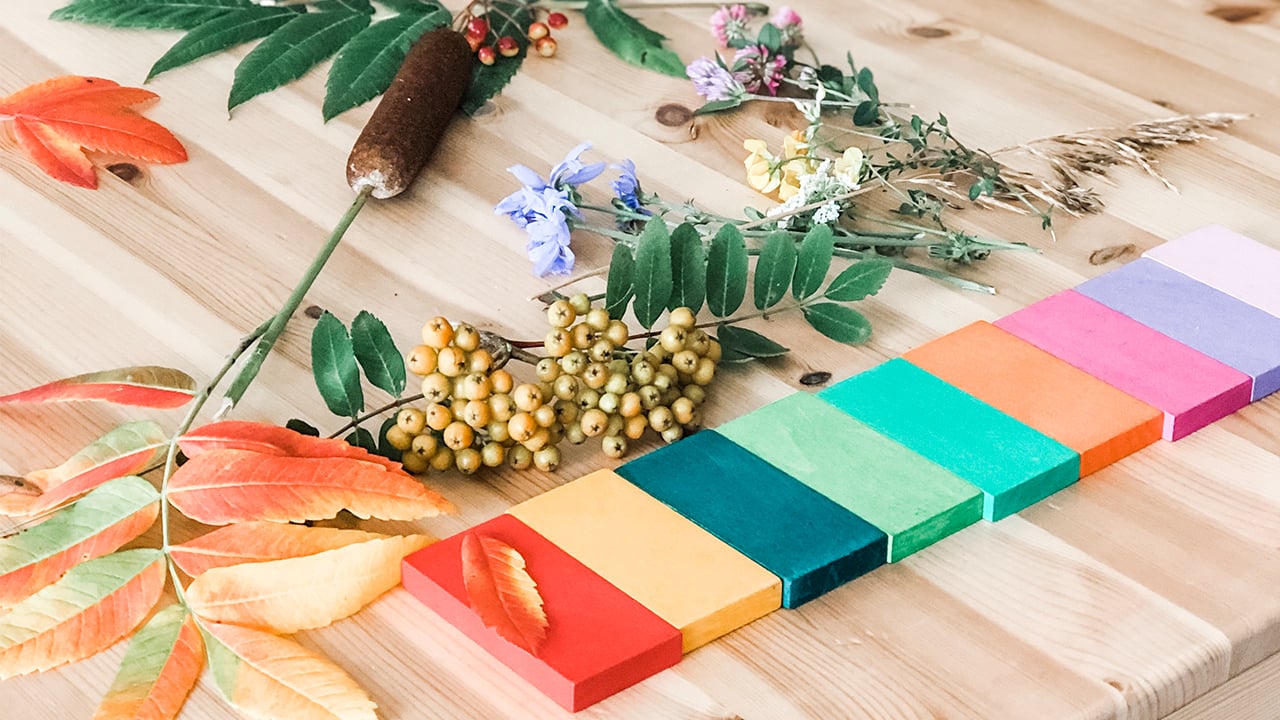
Photo: Courtesy of Katie Engel
Go on a “colour hunt” in your backyard or neighbourhood and see how many colours in the rainbow you can find. Bring your nature finds inside to examine and discuss the various colours you found. Compare them to a book about colours you may have. Can you find (and group) similarly-coloured markers, paint samples, magnetic tiles, LEGOs or coloured blocks? Are any an exact match? Which colours did you see most? Were any colours hard to find in nature?
8. Sensory play exploration
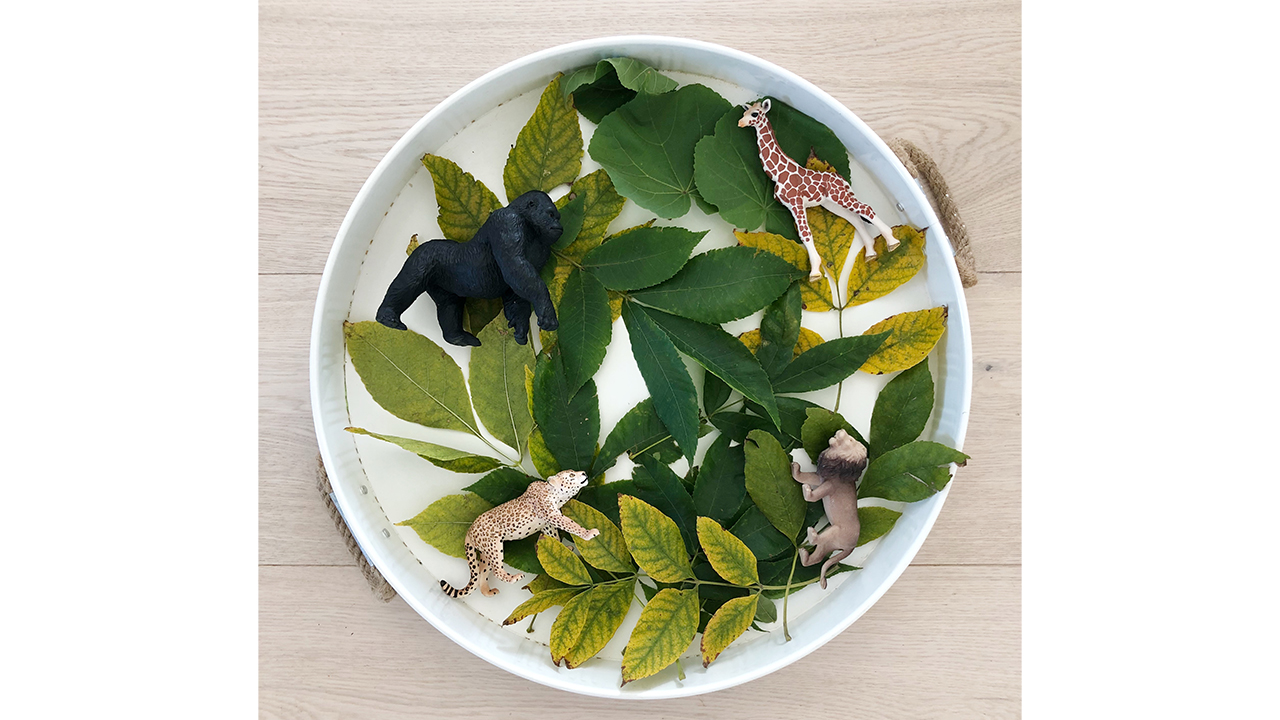
Photo: Courtesy of Katie Engel
Keep it simple with a sensory exploration bin. Add some tongs, bowls, cups, or even animal figurines. This will allow your little one to dictate where this activity will go by simply providing these open-ended materials and then letting their imaginations take over. Do you have a little one who is still putting everything in their mouth? Let them explore safely by popping the nature items into clear containers for them to look at or roll around.
9. Invitation to paint
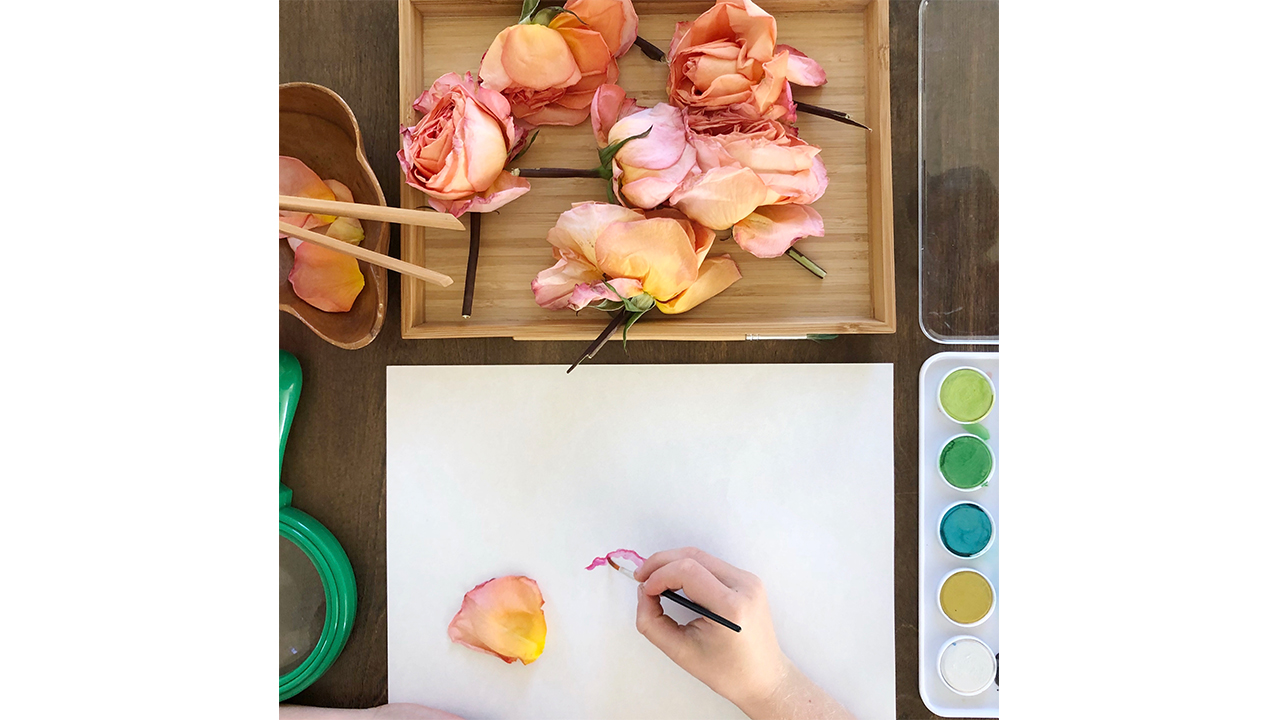
Photo: Courtesy of Katie Engel
Set up an “invitation to paint” (or invitation to draw) by collecting some flowers and then placing all the materials your child will need on a table for them: paper, brushes, paint, markers, etc. If the weather allows, set up the table or easel outside. Let your child discover this invitation on their own and see how they react. Encourage them to paint or draw what they see. Ask about the colours and shapes that they notice.
10. Counting practice
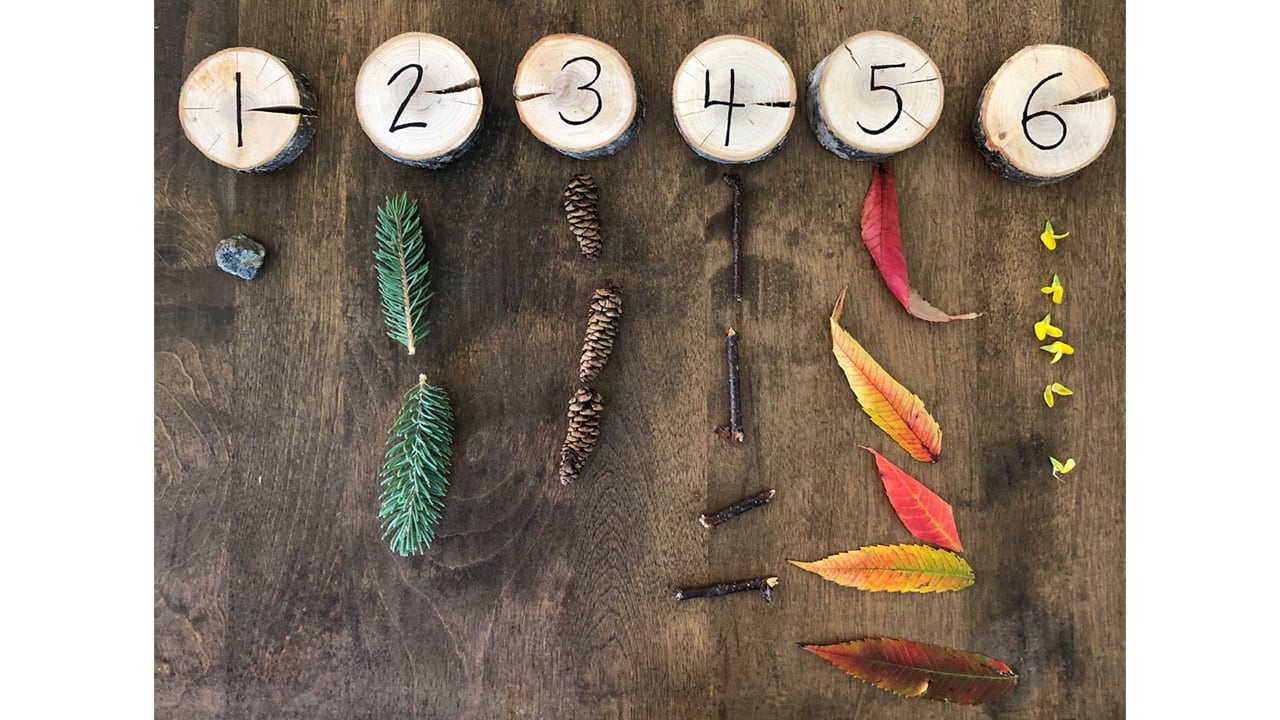
Photo: Courtesy of Katie Engel
Go on a number hunt with your child outside and see if you can collect items to count, up to ten (or more!). Start with these prompts: “What would you like to find one of?” Then say, “Now, what should we find two of?” Bring all your items inside and count them out. You may choose to write the numbers (one through ten) on a piece of paper, or use magnetic numbers if you have them. (I used wood rounds and a permanent marker to create our own numbers.) Did you manage to get it all on the first try? You may need to go back out and find more of a certain item.
11. Add to play dough
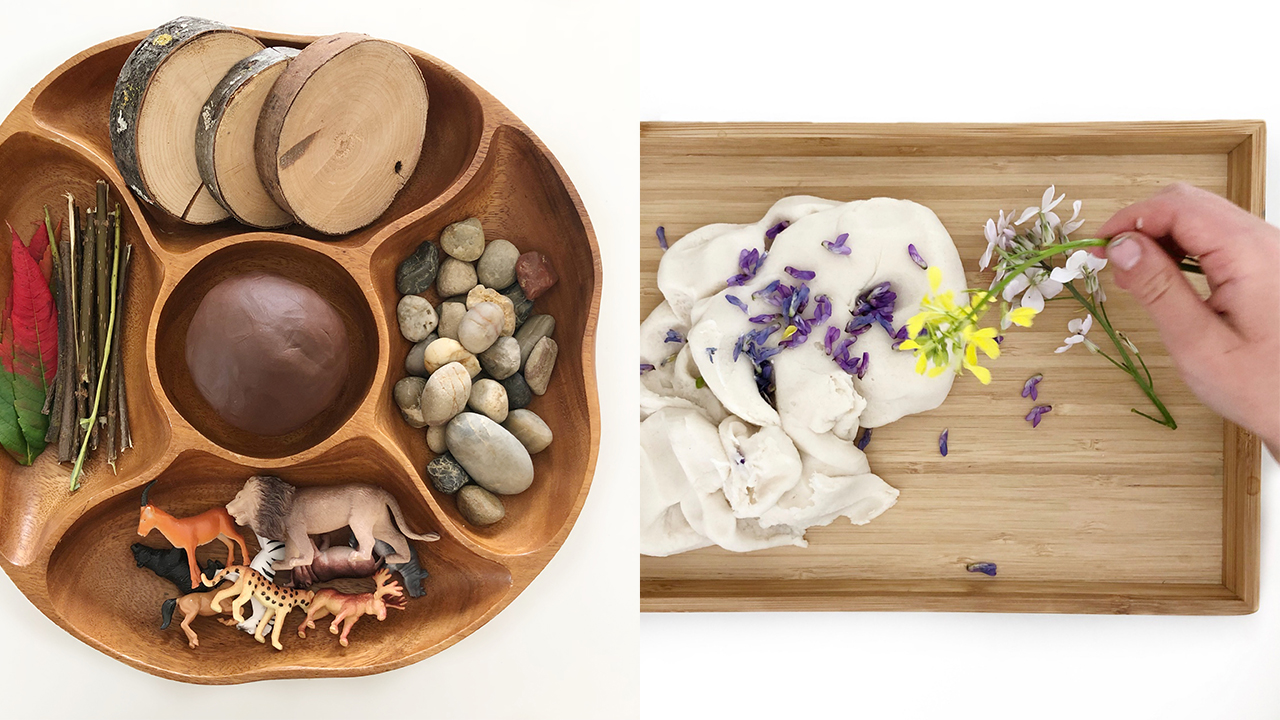
Photo: Courtesy of Katie Engel
Play dough can be a wonderfully relaxing, meditative activity. Nature items found outside make a beautiful addition to play dough: sticks, rocks, and leaves can be incorporated, along with plastic animals or anything else that helps your child create “small worlds” and engage in imaginative play. Or simply add some flower petals to some plain dough for a fun and unique experience.
12. Natural art
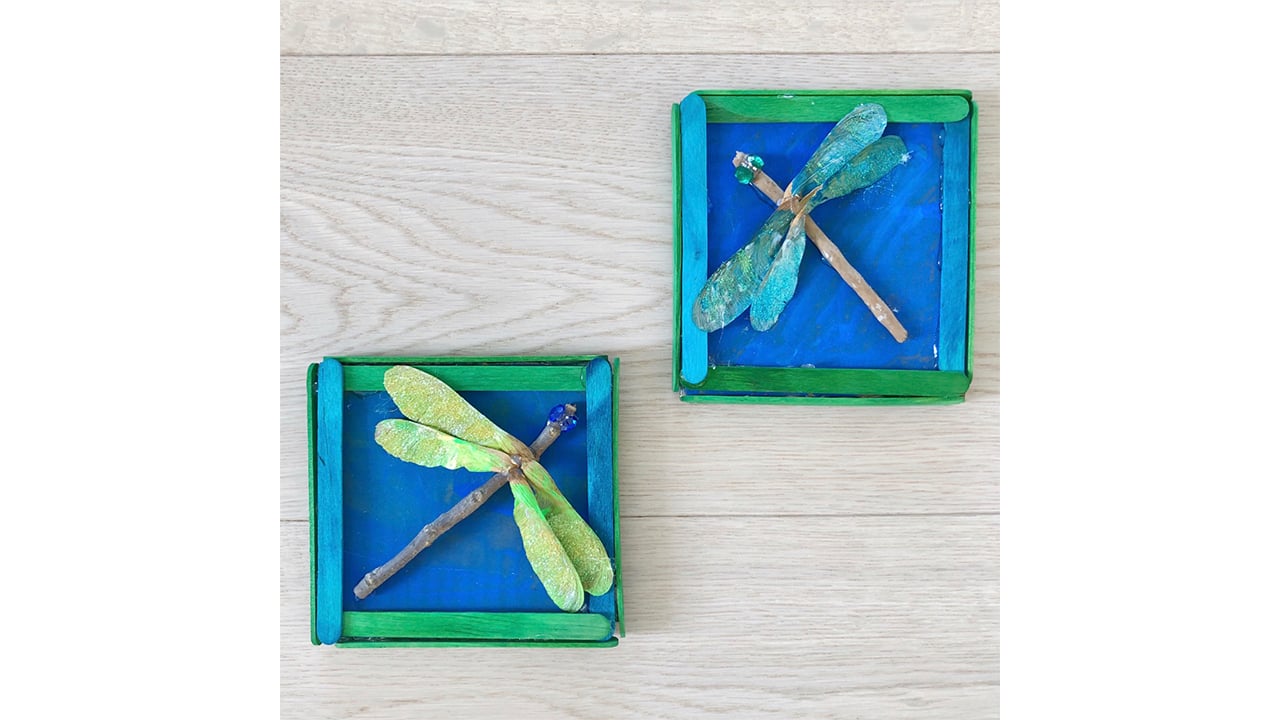
Photo: Courtesy of Katie Engel
What can you make with the nature items you collected? Use them to create what’s called “transient art:” this means when loose parts are manipulated and explored to make non-permanent patterns, designs, and artwork. Or, make your designs more permanent by helping your child glue them together onto card stock or paper, once they’re happy with their design. Here, we made dragonflies out of sticks and the “helicopters” (or seed pods) from maple trees. What will you make?
Katie Engel, an Ottawa mom and former Kindergarten ECE, runs the kids’ activities blog Early Childhood Fun 101. You can also find her on Facebook and Instagram.
The post 12 nature-based crafts and activities to celebrate spring (and keep your kids busy) appeared first on Today's Parent.